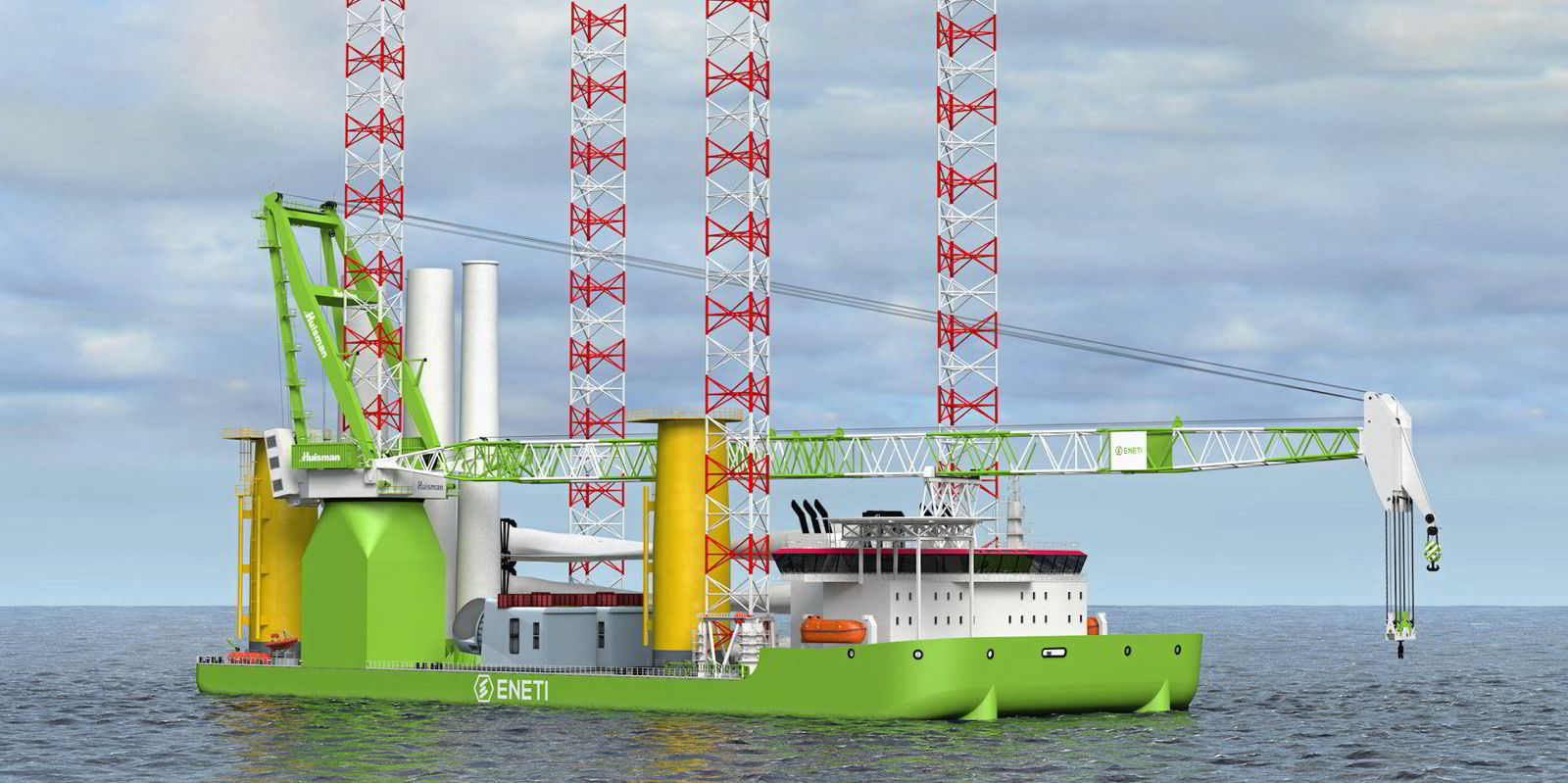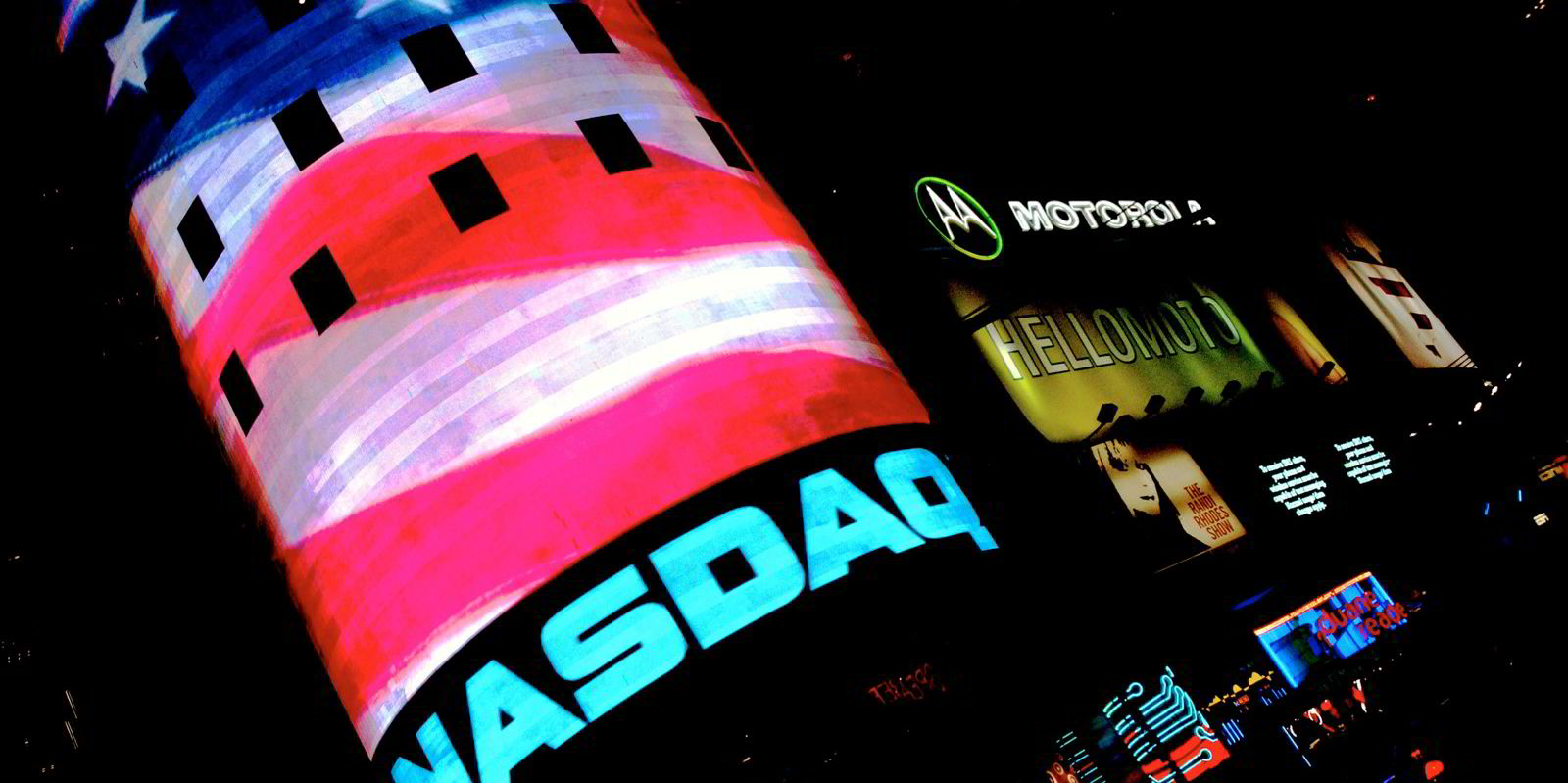In this week's Green Seas newsletter, we explore the orderbook for wind turbine installation vessels after Eneti's latest $325m newbuilding contract. Subscribe at tinyurl.com/greenseas.
__________________________
When Eneti struck a deal to order a large $325m wind turbine installation vessel in South Korea, the shipowner was continuing its drive into a market that is expected to grow as offshore wind projects opt for larger and larger turbines.
But you couldn't have expected the owner to have a long-term contract in place to employ the vessel. WTIVs just don't work that way.
These specialised vessels have market fundamentals that players in the offshore drilling sector will be familiar with: they're expensive to build but typically operate on short contracts to serve an offshore wind project for a year or two, before moving on to their next job.
Those dynamics have fuelled boom-and-bust swings in the oil and gas drilling sector.
And for WTIV players such as Eneti, that highlights the first-mover advantage: you want newbuildings to land in time to catch the wave as it is rising, not when it's already crested.
And there is a wave of offshore wind projects expected that will use extra-large turbines and support demand for these big WTIVs.
There is hope for the demand line to continue to grow, and analysts see Eneti's recent order for a second WTIV as a way to get in the ground floor of the expected surge in demand for these vessels.

Here
"Being a first-mover in a growing industry, I would argue, is beyond the key to being successful," said Gregory Lewis, a BTIG analyst who takes a bullish stance on Eneti's New York-listed shares.
The latest order from Eneti means there are 11 of these WTIVs on the orderbook with delivery through to 2025. The majority of those will be able to accommodate the 20-megawatt turbines of the future.
Future-proofing
"With this increase in turbine sizes that have been going so rapidly, I think they're trying to future-proof their fleet," Martin Lysne, an analyst on the energy service research team, said of these orders
And Eneti's latest newbuilding at Daewoo Shipbuilding & Marine Engineering will not be the last. The company is nearing an order for a US-built WTIV, and other players in the sector are in talks for other newbuildings.
Lysne said he does not expect an immediate rush for more vessels beyond that, but more large WTIVs will be needed for delivery ahead of 2030 as existing ships are increasingly unable to handle the size of turbines being installed.
He also sees room in the market for Eneti's proposed WTIV that would be built in a Texas shipyard to operate in the Jones Act sector, despite the far higher price tag on US-built tonnage. It would become the protected market's second WTIV after a vessel ordered by Dominion Energy.
There are risks for future slumps in WTIV utilisation, for example, if projects start to gravitate towards floating wind, which does not require WTIVs, and vessels are employed in lower-yield operations and maintenance work.
Fortunately, the short-term nature of WTIV employment contracts has also served to stave off over-ordering, which may help prevent the deep slumps seen in drilling rigs.
Analysts see plenty of demand ahead to support the vessels currently planned, and Eneti's order is seen as a safe bet.
The Monaco company's two newbuildings at DSME are scheduled to land in 2024 and 2025, which is an opportune time as the offshore wind activity ramps up and the focus on larger turbines becomes more widespread.
"The second half of this decade is going to be very busy," said Alexander Flotre, vice president for offshore wind at Rystad.
Lewis pointed to the rising number of countries committing to carbon neutrality by 2050 in connection with the recent United Nations' COP26 climate conference. Offshore wind will have to play a key role in meeting those commitments, because of space constraints for other renewable power sources.
"There's only so many places you can put solar panels and onshore turbines, but you have this vast sea that is very ripe for offshore wind," he told TradeWinds.
More sustainability stories
• Shipbuilder Sembcorp Marine has scored a contract to design what could become the world's first ammonia fuelled tanker. Read the story in Upstream.
• Stiesdal Offshore Technologies' pioneering next-generation floating wind project off Norway has achieved first power. The "industrialisation-engineered" design is backed by international energy players Shell, RWE and Tokyo Electric Power Co. Read the story in Recharge.
• The world's first liquefied hydrogen carrier is gearing up to leave Australia with its maiden cargo. Read the story in TradeWinds.





